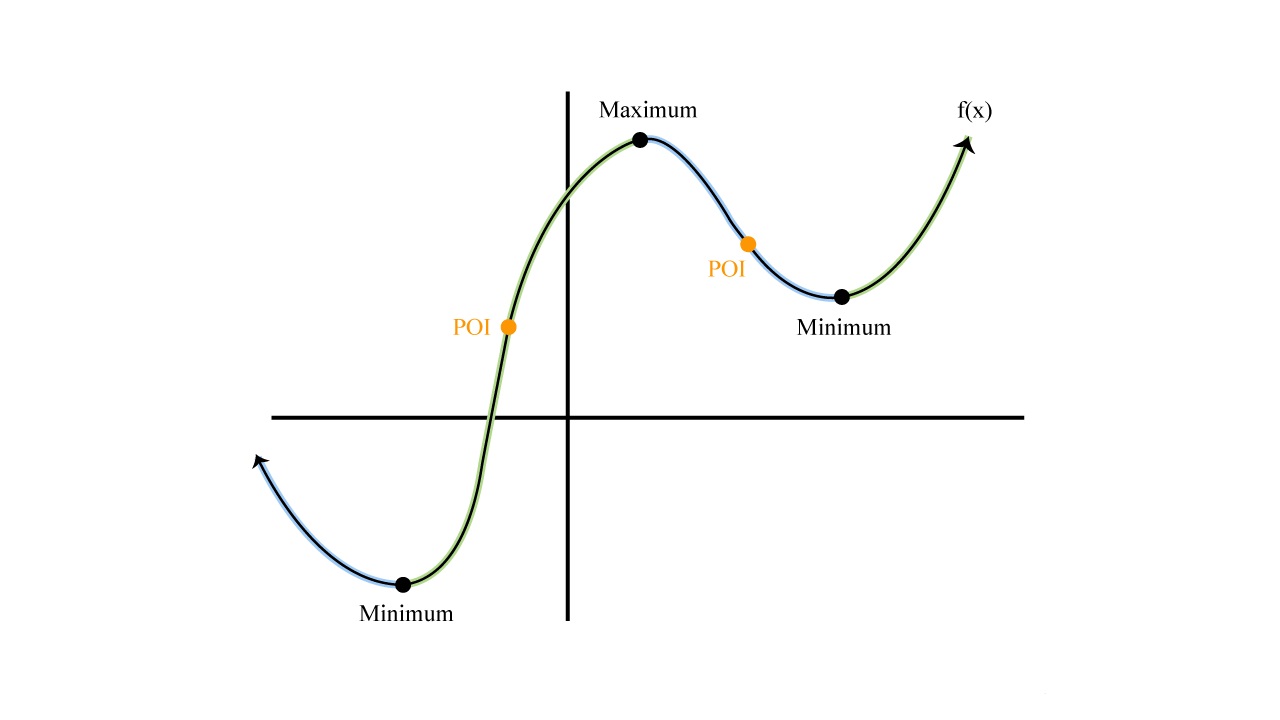Home>Finance>How Does The EMV Chip And Pin System Work Together With PCI DSS


Finance
How Does The EMV Chip And Pin System Work Together With PCI DSS
Published: March 6, 2024
Learn how the EMV chip and PIN system work together with PCI DSS to enhance finance security. Understand the integration and benefits.
(Many of the links in this article redirect to a specific reviewed product. Your purchase of these products through affiliate links helps to generate commission for LiveWell, at no extra cost. Learn more)
Table of Contents
Introduction
The EMV chip and PIN system and the Payment Card Industry Data Security Standard (PCI DSS) are crucial components of the modern payment ecosystem. Understanding how these two elements work together is essential for maintaining secure and efficient payment processing. This article will delve into the intricacies of the EMV chip and PIN system and PCI DSS, exploring their individual functions before examining how they complement each other. By the end, readers will have a comprehensive understanding of the collaborative role played by these two security measures in safeguarding payment transactions.
The EMV chip and PIN system has revolutionized payment card technology, offering enhanced security and reducing the risk of counterfeit card fraud. Meanwhile, PCI DSS serves as a set of comprehensive security standards designed to ensure the protection of cardholder data. By examining the interplay between these two systems, we can gain valuable insights into the mechanisms that underpin secure payment processing.
This article will first provide an in-depth understanding of the EMV chip and PIN system, shedding light on its core features and operational principles. Subsequently, it will delve into the intricacies of PCI DSS, elucidating its role in fortifying payment security. Finally, the article will explore how the EMV chip and PIN system collaborates with PCI DSS to create a robust defense against potential security breaches and fraudulent activities. Moreover, the article will highlight the benefits of this collaboration, as well as the challenges and considerations associated with its implementation.
By the end of this exploration, readers will have a comprehensive grasp of the symbiotic relationship between the EMV chip and PIN system and PCI DSS, as well as the advantages and complexities inherent in their integration. This knowledge will empower stakeholders within the payment industry to make informed decisions and implement robust security measures, ultimately contributing to a safer and more secure payment environment for businesses and consumers alike.
Understanding EMV Chip and PIN
The EMV chip and PIN system represents a significant advancement in payment card technology, providing heightened security and mitigating the risk of fraudulent transactions. EMV, which stands for Europay, Mastercard, and Visa, refers to the global standard for chip-based payment cards and terminals. Unlike traditional magnetic stripe cards, EMV cards are equipped with a microprocessor chip that stores and processes data, offering dynamic authentication for each transaction.
At the core of the EMV chip and PIN system is the integration of two-factor authentication, which enhances the security of payment transactions. The chip within the EMV card generates a unique cryptogram for each transaction, making it exceedingly difficult for fraudsters to replicate or intercept sensitive cardholder data. Furthermore, the use of a personal identification number (PIN) adds an additional layer of security, as the cardholder must enter the correct PIN to authorize a transaction, thereby reducing the likelihood of unauthorized card usage in the event of theft or loss.
With the EMV chip and PIN system, the traditional swipe-and-signature method is replaced by a more secure process. When making a payment, the cardholder inserts the EMV card into a compatible terminal and enters their PIN, prompting the chip to generate a unique code for the transaction. This dynamic authentication process significantly reduces the risk of counterfeit card fraud, as the generated code cannot be reused for subsequent transactions, rendering stolen data virtually useless to fraudsters.
Moreover, the EMV chip and PIN system is designed to combat various forms of card-present fraud, including skimming and counterfeit card usage. By leveraging cryptographic algorithms and dynamic data authentication, EMV technology fortifies the security of in-person transactions, providing a robust defense against unauthorized access to cardholder data.
In summary, the EMV chip and PIN system represents a pivotal advancement in payment security, offering dynamic authentication, two-factor verification, and enhanced protection against fraudulent activities. Its integration of chip-based technology and PIN authentication has significantly contributed to the reduction of counterfeit card fraud, bolstering confidence in the security of payment card transactions.
Understanding PCI DSS
The Payment Card Industry Data Security Standard (PCI DSS) serves as a comprehensive framework for securing payment card transactions and protecting cardholder data. Developed by the major credit card companies, including Visa, Mastercard, American Express, Discover, and JCB, PCI DSS encompasses a set of security standards and best practices designed to safeguard sensitive payment information and prevent data breaches.
PCI DSS consists of twelve core requirements, each addressing specific aspects of data security and operational practices. These requirements encompass areas such as building and maintaining a secure network, protecting cardholder data, implementing strong access control measures, regularly monitoring and testing networks, and maintaining an information security policy. By adhering to these requirements, organizations involved in payment card processing can establish robust security measures to mitigate the risk of data compromise and unauthorized access.
Furthermore, PCI DSS mandates the implementation of various security controls, including encryption, access restrictions, network segmentation, and regular security assessments. These controls are instrumental in fortifying the infrastructure and systems that handle payment card data, thereby reducing vulnerabilities and enhancing the overall security posture of organizations within the payment ecosystem.
Compliance with PCI DSS is not only essential for protecting cardholder data but also for fostering trust and confidence among consumers. By demonstrating adherence to the stringent security standards outlined in PCI DSS, businesses signal their commitment to safeguarding sensitive information, thereby enhancing their reputation and credibility in the marketplace.
Moreover, PCI DSS compliance is a critical requirement for entities involved in payment card processing, including merchants, financial institutions, and service providers. Non-compliance can result in severe consequences, including financial penalties, reputational damage, and potential suspension of card acceptance privileges. As such, organizations are incentivized to prioritize PCI DSS compliance to mitigate risk and uphold the integrity of the payment ecosystem.
In essence, PCI DSS plays a pivotal role in promoting the security and integrity of payment card transactions, setting forth stringent standards and best practices to safeguard cardholder data and prevent security breaches. Its comprehensive framework serves as a cornerstone for establishing robust security measures within the payment industry, ultimately contributing to a safer and more secure environment for processing payment transactions.
How EMV Chip and PIN Work Together with PCI DSS
The collaborative integration of the EMV chip and PIN system with the Payment Card Industry Data Security Standard (PCI DSS) represents a formidable defense against potential security breaches and fraudulent activities within the payment ecosystem. By aligning the security features of EMV technology with the stringent requirements of PCI DSS, organizations can establish a multi-layered approach to protecting payment card transactions and safeguarding sensitive cardholder data.
EMV chip and PIN technology, with its dynamic authentication and two-factor verification, complements the data security objectives outlined in PCI DSS. The use of a microprocessor chip in EMV cards enhances the protection of cardholder data, as the dynamic nature of the authentication process makes it exceedingly challenging for fraudsters to compromise sensitive information. Additionally, the requirement for a PIN further strengthens the security of transactions, reducing the risk of unauthorized card usage in the event of theft or loss. This collaborative approach aligns with the access control and authentication requirements of PCI DSS, which emphasize the implementation of strong access controls and multi-factor authentication to prevent unauthorized access to cardholder data.
Furthermore, the robust encryption and tokenization capabilities inherent in EMV chip and PIN technology resonate with the encryption and protection requirements of PCI DSS. EMV technology leverages cryptographic algorithms to generate unique transaction codes, rendering stolen card data virtually useless for fraudulent activities. This aligns with the encryption mandates of PCI DSS, which emphasize the secure transmission and storage of cardholder data through robust encryption mechanisms.
Moreover, the implementation of EMV chip and PIN technology contributes to the overall risk reduction objectives of PCI DSS. By fortifying the security of in-person transactions and mitigating the risk of counterfeit card fraud, EMV technology aligns with the risk management and mitigation strategies advocated by PCI DSS. This collaborative approach bolsters the overall security posture of organizations involved in payment card processing, aligning with the overarching goal of PCI DSS to prevent data breaches and protect sensitive payment information.
In essence, the integration of EMV chip and PIN technology with PCI DSS represents a harmonious alignment of security measures, encompassing dynamic authentication, encryption, access controls, and risk mitigation strategies. This collaborative approach creates a robust defense against potential security threats, fostering a secure and resilient environment for processing payment card transactions.
Benefits of EMV Chip and PIN with PCI DSS
The collaborative implementation of the EMV chip and PIN system with the Payment Card Industry Data Security Standard (PCI DSS) yields a multitude of benefits, encompassing enhanced security, reduced fraud risk, and heightened consumer confidence in payment card transactions. By leveraging the synergies between EMV technology and PCI DSS, organizations can realize significant advantages in fortifying the security of payment processing and protecting sensitive cardholder data.
One of the primary benefits of integrating EMV chip and PIN with PCI DSS is the mitigation of counterfeit card fraud. The dynamic authentication and cryptographic capabilities of EMV technology, combined with the encryption and protection mandates of PCI DSS, create a formidable defense against fraudulent activities. This collaborative approach reduces the risk of unauthorized access to cardholder data and minimizes the potential for counterfeit card usage, thereby enhancing the overall security of payment transactions.
Furthermore, the integration of EMV chip and PIN with PCI DSS contributes to the reduction of financial liabilities associated with data breaches and fraudulent transactions. By aligning with the stringent security standards of PCI DSS, organizations can mitigate the risk of non-compliance penalties and reputational damage, thereby safeguarding their financial stability and integrity within the payment industry.
Moreover, the collaborative approach between EMV chip and PIN technology and PCI DSS enhances consumer confidence and trust in payment card transactions. The implementation of robust security measures, including dynamic authentication, encryption, and access controls, communicates a strong commitment to protecting cardholder data, thereby fostering a sense of security and reliability among consumers.
Additionally, the integration of EMV chip and PIN with PCI DSS facilitates global interoperability and standardization in payment card transactions. EMV technology, as a globally recognized standard, aligns with the overarching objectives of PCI DSS to establish uniform security measures and best practices across the payment industry. This harmonious alignment promotes consistency and coherence in security protocols, enhancing the efficiency and effectiveness of payment card processing on a global scale.
In summary, the collaborative integration of EMV chip and PIN with PCI DSS delivers a spectrum of benefits, including heightened security, reduced fraud risk, enhanced consumer confidence, and global standardization. By leveraging the synergies between these two security measures, organizations can fortify their security posture, mitigate financial liabilities, and foster a secure and trusted payment environment for businesses and consumers alike.
Challenges and Considerations
While the integration of the EMV chip and PIN system with the Payment Card Industry Data Security Standard (PCI DSS) offers substantial security benefits, it also presents organizations with a set of challenges and considerations that warrant careful attention. Understanding and addressing these challenges is essential for optimizing the collaborative implementation of these security measures and ensuring the continued protection of payment card transactions.
One of the primary challenges associated with the adoption of EMV chip and PIN technology is the initial investment required for upgrading payment infrastructure. Organizations must invest in EMV-compliant terminals and card issuance systems, as well as educate staff and consumers about the transition to chip-based technology. Similarly, aligning with the stringent security requirements of PCI DSS may necessitate additional investments in encryption technologies, access controls, and security assessments, posing financial considerations for businesses, particularly small and medium-sized enterprises.
Furthermore, the complexity of integrating EMV chip and PIN technology with existing payment systems and operational processes can pose technical challenges for organizations. Ensuring seamless interoperability between EMV-compliant terminals and backend systems, as well as aligning with the encryption and data protection mandates of PCI DSS, requires meticulous planning and execution to avoid disruptions in payment processing and customer experiences.
Compliance with the evolving requirements of EMV and PCI DSS also presents an ongoing challenge for organizations. Staying abreast of updates to EMV specifications and PCI DSS standards, as well as addressing new security vulnerabilities and emerging threats, demands continuous vigilance and resource allocation. Organizations must prioritize regular security assessments, training, and updates to maintain compliance with the dynamic landscape of payment security.
Moreover, the collaborative implementation of EMV chip and PIN with PCI DSS necessitates a concerted effort to educate and engage stakeholders, including merchants, consumers, and payment service providers. Communicating the benefits of EMV technology and PCI DSS compliance, as well as addressing concerns related to security, privacy, and usability, requires strategic communication and stakeholder engagement strategies.
Despite these challenges, organizations can navigate the collaborative implementation of EMV chip and PIN with PCI DSS by carefully considering these factors and devising comprehensive strategies to address them. By proactively managing the financial, technical, compliance, and communication aspects of this integration, organizations can optimize the security benefits while mitigating potential obstacles.
Conclusion
The collaborative integration of the EMV chip and PIN system with the Payment Card Industry Data Security Standard (PCI DSS) represents a pivotal advancement in fortifying the security of payment card transactions and safeguarding sensitive cardholder data. By aligning the dynamic authentication and encryption capabilities of EMV technology with the stringent security standards of PCI DSS, organizations can establish a multi-layered defense against potential security breaches and fraudulent activities within the payment ecosystem.
The benefits of this collaborative approach are multifaceted, encompassing enhanced security, reduced fraud risk, consumer confidence, and global standardization. The dynamic authentication and two-factor verification of EMV chip and PIN technology, when harmonized with the encryption, access controls, and compliance requirements of PCI DSS, create a robust security framework that mitigates the risk of counterfeit card fraud and unauthorized access to cardholder data. This collaborative integration also fosters consumer trust and confidence in payment card transactions, signaling a strong commitment to protecting sensitive information and upholding security standards.
However, the adoption of this collaborative approach is not without its challenges and considerations. Organizations must navigate financial investments, technical complexities, compliance requirements, and stakeholder engagement to optimize the implementation of EMV chip and PIN with PCI DSS. By addressing these challenges proactively and strategically, organizations can maximize the security benefits while mitigating potential obstacles.
In conclusion, the collaborative integration of the EMV chip and PIN system with PCI DSS represents a significant milestone in advancing the security and integrity of payment card transactions. This harmonious alignment of security measures not only mitigates the risk of fraudulent activities and data breaches but also fosters a secure and trusted payment environment for businesses and consumers alike. By leveraging the synergies between EMV technology and PCI DSS, organizations can fortify their security posture, mitigate financial liabilities, and contribute to a safer and more secure payment ecosystem on a global scale.














